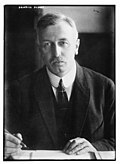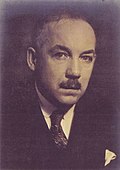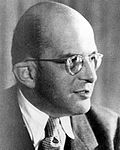| No. | Portrait | Name
(born–died) | Term of office | Political party | Cabinet | Ref. |
|---|
| Took office | Left office | Time in office |
|---|
| 1 |  | Christoph von Tiedemann [ de ]
(1836–1907) | 21 March 1871 | 20 September 1881 | 10 years, 183 days | | German Reich Party | Bismarck | [1] |
|---|
| 2 |  | Franz Johannes von Rottenburg [ de ]
(1845–1907) | 14 October 1881 | 19 January 1891 | 9 years, 97 days | | Independent | Bismarck
Caprivi | [2] |
|---|
| 3 |  | Karl Göring
(1829–1905) | 1 February 1891 | 31 December 1894 | 3 years, 333 days | | Independent | Caprivi
Hohenlohe-Schillingsfürst | |
|---|
| 4 |  | Kurt von Wilmowsky [ de ]
(1850–1941) | 1 January 1895 | 15 August 1901 | 6 years, 226 days | | Independent | Hohenlohe-Schillingsfürst
Bülow | [3] |
|---|
| 5 |  | Alfred von Conrad [ de ]
(1852–1914) | 14 August 1901 | 18 September 1904 | 3 years, 35 days | | Independent | Bülow | |
|---|
| 6 |  | Friedrich Wilhelm von Loebell [ de ]
(1855–1931) | 25 September 1904 | 14 July 1909 | 4 years, 292 days | | German Conservative Party | Bülow | [4] |
|---|
| 7 |  | Arnold Wahnschaffe [ de ]
(1865–1941) | 20 November 1909 | 11 August 1917 | 7 years, 264 days | | Independent | Bethmann Hollweg
Michaelis | |
|---|
| 8 |  | Hans Joachim von Graevenitz [ de ]
(1874–1938) | 11 August 1917 | 9 November 1917 | 90 days | | Independent | Michaelis | |
|---|
| 9 |  | Wilhelm von Radowitz [ de ]
(1875–1939) | 20 November 1917 | 17 October 1918 | 331 days | | Independent | Hertling | |
|---|
| (7) |  | Arnold Wahnschaffe [ de ]
(1865–1941) | 18 October 1918 | 9 November 1918 | 22 days | | Independent | Baden | |
|---|
| 10 |  | Curt Baake [ de ]
(1864–1940) | 13 February 1919 | 3 March 1919 | 18 days | | Social Democratic Party of Germany | Scheidemann | [5] |
|---|
| 11 |  | Heinrich Albert
(1874–1960) | 3 March 1919 | 24 May 1921 | 2 years, 82 days | | Independent | Scheidemann
Bauer
Müller I
Fehrenbach
Wirth I | [5] [6]
[7] [8]
[9] |
|---|
| – |  | Arnold Brecht
(1884–1977)
acting | 24 May 1921 | 3 August 1921 | 71 days | | Independent | Wirth I | [9] |
|---|
| 12 |  | Heinrich Hemmer [ de ]
(1886–1942) | 3 August 1921 | 22 November 1922 | 1 year, 111 days | | Independent | Wirth I–II | [9] |
|---|
| 13 |  | Eduard Hamm
(1881–1944) | 22 November 1922 | 12 August 1923 | 263 days | | German Democratic Party | Cuno | [10] |
|---|
| 14 |  | Werner von Rheinbaben
(1878–1975) | 13 August 1923 | 17 October 1923 | 65 days | | German People's Party | Stresemann I–II | [11] |
|---|
| 15 |  | Adolf Kempkes [ de ]
(1871–1931) | 17 October 1923 | 23 November 1923 | 37 days | | German People's Party | Stresemann II | [11] |
|---|
| 16 |  | Franz Bracht
(1877–1933) | 30 November 1923 | 18 December 1924 | 1 year, 18 days | | Independent | Marx I–II | [12] |
|---|
| 17 |  | Franz Kempner [ de ]
(1879–1945) | 16 January 1925 | 20 July 1926 | 1 year, 185 days | | German People's Party | Luther I–II
Marx III | [13] [14] |
|---|
| 18 |  | Hermann Pünder
(1888–1976) | 20 July 1926 | 1 June 1932 | 5 years, 317 days | | Centre Party | Marx III–IV
Müller II
Brüning I–II | [14] [15]
[16] |
|---|
| 19 |  | Erwin Planck
(1893–1945) | 1 June 1932 | 30 January 1933 | 243 days | | Independent | Papen
Schleicher | [17] [18] |
|---|
| 20 |  | Hans Lammers
(1879–1962) | 30 January 1933 | 24 April 1945 | 12 years, 84 days | | Nazi Party | Hitler | |
|---|
















